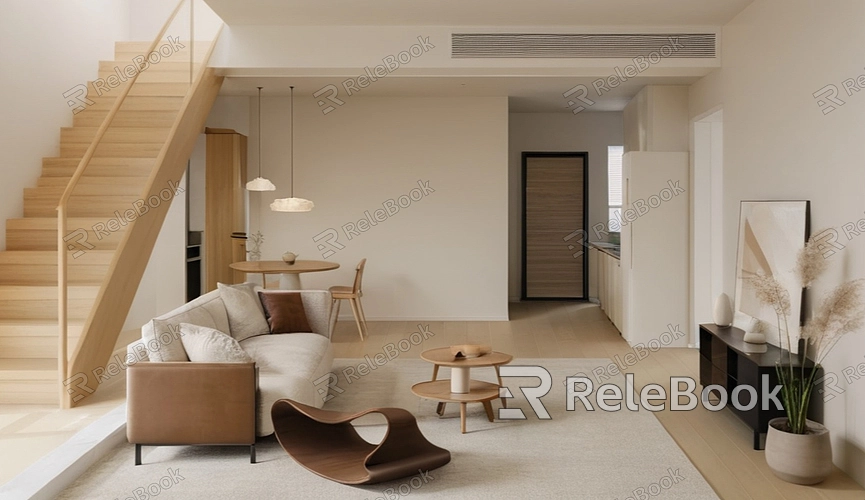Why Has My 3D Model Lost Its Colors and Textures?
When disigning, the colors and textures of a 3D model are key to achieving a compelling visual result. However, sometimes we may notice that these essential elements suddenly disappear, leaving us puzzled and frustrated. The reasons for losing colors and textures can vary, ranging from file management issues to software settings. This article will explore common causes of 3D models losing their colors and textures and offer solutions to help you restore the model's visual appeal.

Missing Texture Files
When creating 3D models, texture files are typically stored in a specific location. If the texture files are accidentally moved or deleted during the workflow, the model will not be able to load them correctly, leading to a loss of colors and textures. To prevent this from happening, you can follow these steps:
1. Organize files properly: Keep all related texture files in a single folder to avoid scattering them across multiple locations.
2. Use relative paths: When saving files, opt for relative paths rather than absolute paths, so that textures remain linked even when the project is moved.
Ensuring the integrity and correct paths of your texture files can significantly reduce the chances of losing colors and textures in your models.
Incorrect Material Settings
Material settings play a crucial role in how a model displays its colors and textures. If the material parameters are misconfigured, the model may exhibit unexpected effects or lose textures altogether. This typically involves:
1. Check the material type: Ensure that the material type chosen aligns with the needs of the model. Different rendering engines handle materials differently.
2. Adjust parameters: Carefully review parameters like reflection, transparency, and lighting to ensure they reflect the actual requirements of the model.
Verifying that the material settings are accurate can effectively restore the model's colors and textures.

Incorrect UV Mapping
UV mapping is essential for projecting a 2D texture onto the surface of a 3D model. If the UV map is incorrect, textures may appear misaligned or fail to display at all. This issue often arises when working on complex models or during adjustments. To fix this, follow these steps:
1. Re-map the UVs: Use the UV mapping tools in your modeling software to ensure that every part of the surface corresponds correctly to the right area of the texture.
2. Check the UV layout: Visualize the UV layout to confirm that the texture is applied correctly to every part of the model.
Proper handling of UV coordinates ensures that the model's details and colors are displayed correctly.
Rendering Engine Incompatibility
Different rendering engines handle textures and colors in different ways. Some engines may not support certain types of texture files, causing colors and textures to disappear. When choosing a rendering engine, consider the following:
1. Check compatibility: Before using a new rendering engine, review its documentation to ensure it supports the textures and materials you are using.
2. Convert file formats: If necessary, consider converting textures into a format compatible with the rendering engine to ensure they display correctly.
By choosing the right rendering engine and file format, you can avoid losing colors and textures in your models.
Software Version and Updates
In some cases, different software versions may introduce compatibility issues, leading to a loss of colors and textures. Updates can sometimes render certain features obsolete in older projects. To prevent this, take the following steps:
1. Back up your files: Before updating your software, ensure that you have a backup of your current projects so that you can revert to them if needed.
2. Review update logs: Before installing a new version, read the update logs to understand which features might impact your work.
Maintaining software stability and compatibility can reduce the risk of losing colors and textures.
Viewport Settings
In certain cases, a model may lose its colors and textures in the viewport due to the display settings. Different display modes can affect how the model looks, for example:
1. Wireframe mode: In this mode, only the outline of the model is shown, with no colors or textures displayed.
2. Rendered view: Ensure you are viewing the model in the rendered or material view to see the actual visual effects.
By adjusting your viewport settings, you can confirm whether the model has truly lost its colors and textures or if it’s just a display mode issue.
Corrupted Project Files
Sometimes, a project file may become corrupted, leading to the loss of colors and textures. This situation can be tricky to resolve, but you can try the following:
1. Recover from backup: If you have a backup of your project file, try restoring an earlier version of the project.
2. Re-import the model: If the file is too corrupted, you may need to re-import the model and ensure that all settings and textures are reloaded properly.
Taking prompt action can help resolve issues caused by file corruption.
Throughout the 3D modeling process, losing colors and textures can be a common but frustrating issue that impacts the final visual outcome. By ensuring texture file integrity, configuring material settings correctly, managing UV mapping, selecting the right rendering engine, and maintaining software compatibility, you can avoid or resolve these issues. Regular backups and checking viewport settings are also essential. Hopefully, the suggestions in this article will help you restore your 3D model’s colors and textures. If you need high-quality 3D models and textures, feel free to visit the Relebook website to explore the resources available for your projects.
FAQ
Why did my model lose its colors and textures after importing?
Incorrect texture file paths or missing texture files usually cause this. Check the location of your texture files to ensure they are on the correct path.
How do I check if my material settings are correct?
Open the material editor in your modeling software and check all material properties to ensure they are pointing to the correct textures and have the right parameter settings.
What should I do if my UV coordinates are wrong?
You can use the UV mapping tools in your 3D software to re-map the UVs, making sure every part of the model corresponds to the right area of the texture.
What happens if the rendering engine is not compatible?
An incompatible rendering engine may not support certain texture file formats, leading to a loss of colors and textures. Ensure you are using a compatible engine and file format.
How can I avoid problems after a software update?
Back up your projects before updating, and check the update logs for any changes that might affect your work.

